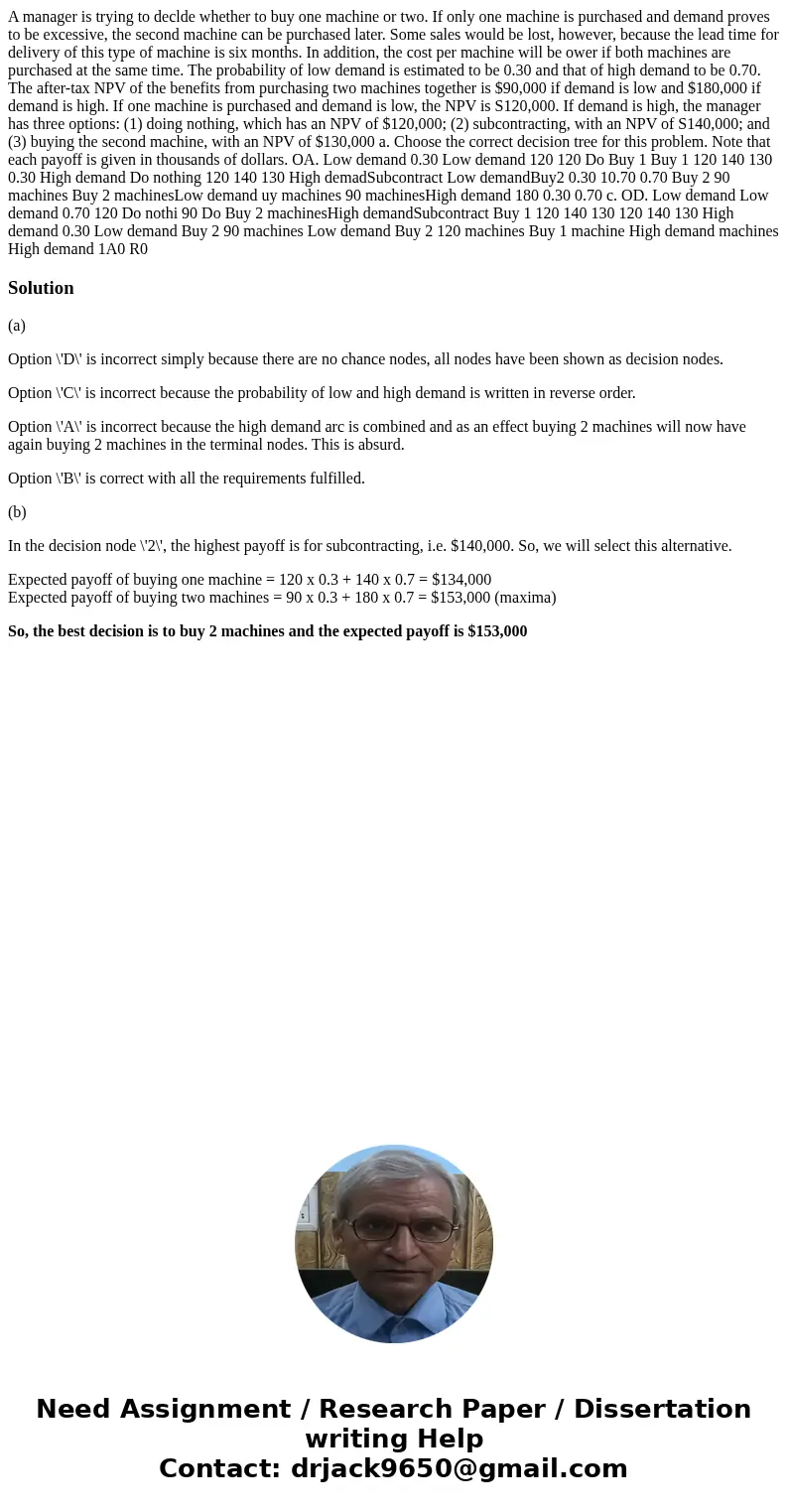A manager is trying to declde whether to buy one machine or two. If only one machine is purchased and demand proves to be excessive, the second machine can be purchased later. Some sales would be lost, however, because the lead time for delivery of this type of machine is six months. In addition, the cost per machine will be ower if both machines are purchased at the same time. The probability of low demand is estimated to be 0.30 and that of high demand to be 0.70. The after-tax NPV of the benefits from purchasing two machines together is $90,000 if demand is low and $180,000 if demand is high. If one machine is purchased and demand is low, the NPV is S120,000. If demand is high, the manager has three options: (1) doing nothing, which has an NPV of $120,000; (2) subcontracting, with an NPV of S140,000; and (3) buying the second machine, with an NPV of $130,000 a. Choose the correct decision tree for this problem. Note that each payoff is given in thousands of dollars. OA. Low demand 0.30 Low demand 120 120 Do Buy 1 Buy 1 120 140 130 0.30 High demand Do nothing 120 140 130 High demadSubcontract Low demandBuy2 0.30 10.70 0.70 Buy 2 90 machines Buy 2 machinesLow demand uy machines 90 machinesHigh demand 180 0.30 0.70 c. OD. Low demand Low demand 0.70 120 Do nothi 90 Do Buy 2 machinesHigh demandSubcontract Buy 1 120 140 130 120 140 130 High demand 0.30 Low demand Buy 2 90 machines Low demand Buy 2 120 machines Buy 1 machine High demand machines High demand 1A0 R0
(a)
Option \'D\' is incorrect simply because there are no chance nodes, all nodes have been shown as decision nodes.
Option \'C\' is incorrect because the probability of low and high demand is written in reverse order.
Option \'A\' is incorrect because the high demand arc is combined and as an effect buying 2 machines will now have again buying 2 machines in the terminal nodes. This is absurd.
Option \'B\' is correct with all the requirements fulfilled.
(b)
In the decision node \'2\', the highest payoff is for subcontracting, i.e. $140,000. So, we will select this alternative.
Expected payoff of buying one machine = 120 x 0.3 + 140 x 0.7 = $134,000
Expected payoff of buying two machines = 90 x 0.3 + 180 x 0.7 = $153,000 (maxima)
So, the best decision is to buy 2 machines and the expected payoff is $153,000

 Homework Sourse
Homework Sourse